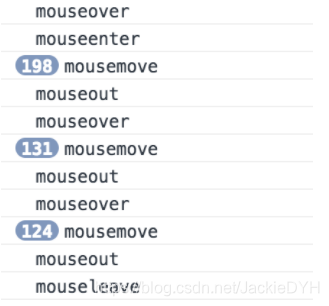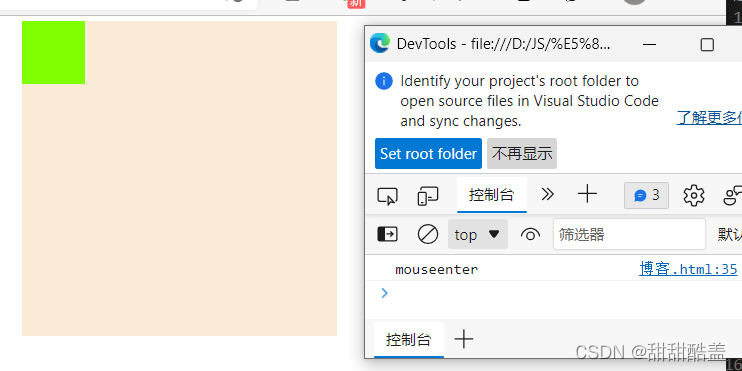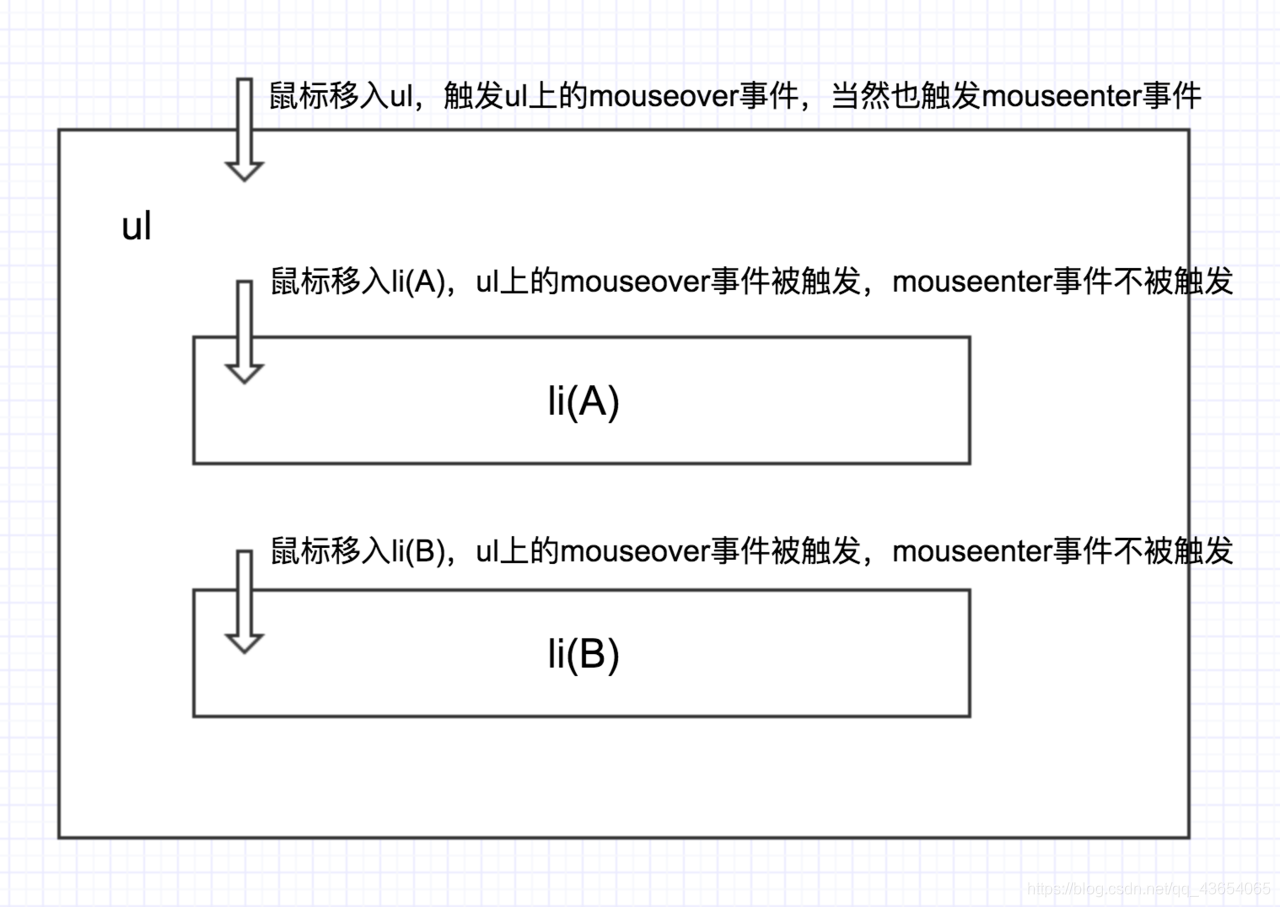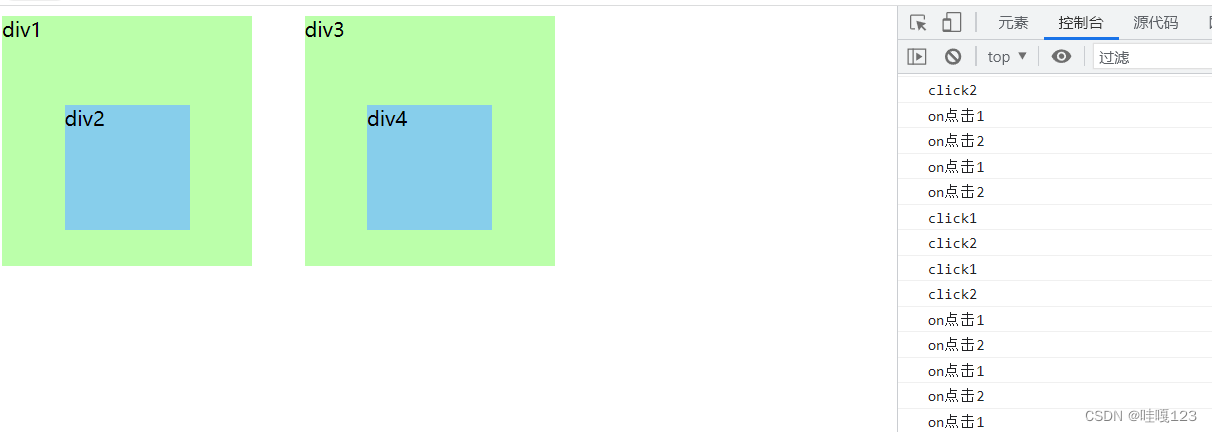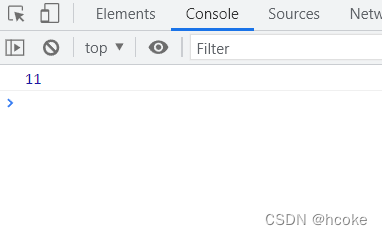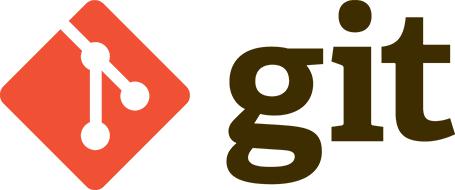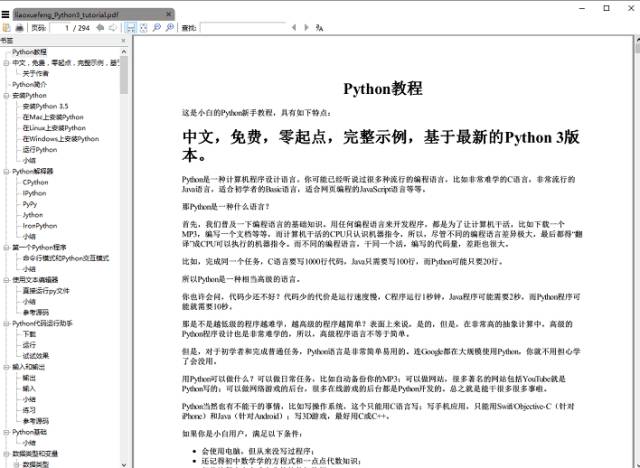mouseover:当鼠标移入元素或其子元素都会触发事件,所以有一个重复触发,冒泡过程。对应的移除事件是mouseout
mouseenter:当鼠标移除元素本身(不包含元素的子元素)会触发事件,也就是不会冒泡,对应的移除事件是mouseleave
异同体现在两个方面:
1. 是否支持冒泡
2.事件的触发时机

mouseenter事件的情况
当鼠标从元素的边界之外移入元素的边界之内时,事件被触发。而鼠标本身在元素边界内时,要触发该事件,必须先将鼠标移出元素边界外,再次移入才能触发。
也就是说:mouseover支持事件冒泡,而mouseenter不支持事件冒泡
由于mouseenter不支持事件冒泡,导致在一个元素的子元素上进入或离开的时候会触发其mouseover和mouseout事件,但不会触发mouseenter和mouseleave事件。
如何模拟mouseenter事件
可见mouseover事件因其具有冒泡的性质,在子元素内移动的时候,频繁被触发,如果我们不希望如此,可以使用mouseenter事件代替之,但是早期只有ie浏览器支持该事件,虽然现在大多数高级浏览器都支持了mouseenter事件,但是难免会有些兼容问题,所以如果可以自己手动模拟,那就太好了。
mouseenter:当鼠标移入某元素时触发。
mouseleave:当鼠标移出某元素时触发。
mouseover:当鼠标移入某元素时触发,移入和移出其子元素时也会触发。
mouseout:当鼠标移出某元素时触发,移入和移出其子元素时也会触发。
mousemove:鼠标在某元素上移动时触发,即使在其子元素上也会触发。
mouseout、mouseover和mouseleave、mouseenter最大的区别,在于子元素连带触发。
<!DOCTYPE html>
<html>
<head lang="en"><meta charset="UTF-8"><title></title><style>.a{width: 500px;height: 500px;background: aliceblue;}.b{width: 200px;height: 200px;background: beige;}.c{width: 100px;height: 100px;background: violet;}</style>
</head>
<body><div class="a">A<div class="b"onmouseenter="mouseenter()"onmouseleave="mouseleave()"onmouseout="mouseout()"onmouseover="mouseover()"onmousemove="mousemove()">B<div class="c">C</div></div></div><script>function mouseenter(){console.log('mouseenter')}function mouseleave(){console.log('mouseleave')}function mouseout(){console.log('mouseout')}function mouseover(){console.log('mouseover')}function mousemove(){console.log('mousemove')}</script>
</body>
</html>
从A元素到C元素,再从C回到A,控制台输出如下
